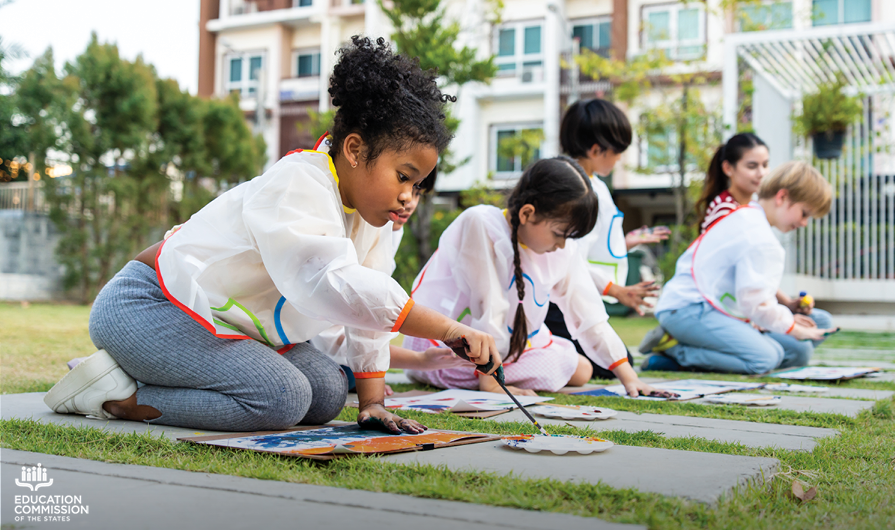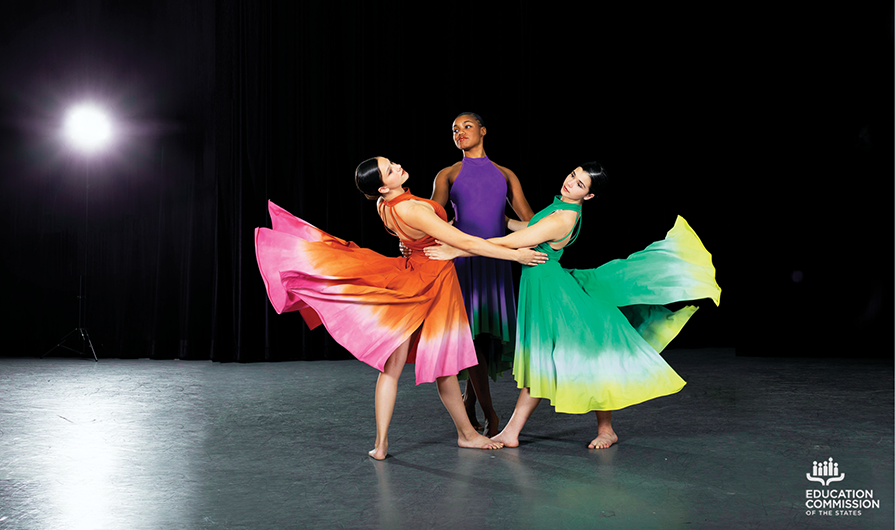Last month, Education Commission of the States President Jeremy Anderson shared six trending education policy topics we will likely see in 2020. Arts education stakeholders and advocates may not be surprised to see that the arts were not listed among the top education issues — but don’t worry! The arts interact with these topics in meaningful ways and can be a critical part of the dialogue around the top six trending education policy priorities.
Early childhood education: From funding to literacy development, we are seeing policymakers’ attention shift to early learners. Research demonstrates that arts integration improves literacy and school-readiness skills for preschoolers in underserved communities, and exposure to the arts at an early age impacts the development of students’ attitudes toward the arts. The arts are also strongly linked to the development of social skills and emotional regulation for early learners.
School climate: Policymakers are addressing school climate through multiple approaches, including student mental health, culturally responsive curricula and school discipline alternatives. Participation in the arts has been found to have a positive effect on student behavior and school engagement, and culturally responsive teaching through the arts improves student connection to the content and their own identities.
K-12 funding: All 50 states and the District of Columbia have adopted arts education standards for early childhood, elementary and secondary education; and more than 40 states have adopted policies related to instructional requirements for elementary, middle and high school. Fewer than 25 states have adopted policies that develop a statewide arts education grant program, though at least 10 states fund arts education through the state education agency.
Teaching: In 2019, policymakers enacted 281 bills affecting teachers. Forty-five states require arts teachers to be endorsed, licensed or certified in one or more arts disciplines; and 27 states specify arts requirements for non-arts teachers. At least 17 states include the arts in alternative certification pathways for teachers.
College affordability: States have continued the effort to support students in paying for college, and arts education organizations have also made efforts to connect students to college and scholarship resources. Dual enrollment arts courses allow high school students to earn college credit, saving money in the long term. High-achieving students across dance, theater, music and visual arts are also recognized through honor societies that provide opportunities for scholarships and college preparation. There is not yet a similar organization for media arts.
Workforce development: By 2030, 85% of the jobs that today’s K-12 learners will be doing haven’t been invented yet. The arts are uniquely situated to teach transferable skills required for career success — such as communication, problem-solving and collaboration — that will continue to be in high demand by employers. In arts environments, learners have the chance to practice active learning, cultural competence and other skills necessary for the workplace of the future.
While 2020 is probably not the year that we see arts education as a national policy priority, let’s not forget that arts education is education — and it is connected to the education policy landscape in meaningful ways.
Want to continue this conversation?
The Arts Education Partnership is pleased to collaborate with Americans for the Arts to host the Arts Education Policy Briefing on March 29 in Washington, D.C. AEP invites you to join to discuss two of these priorities — workforce development and school climate — together with other education and arts stakeholders. Registration is open, and we look forward to seeing you there!










